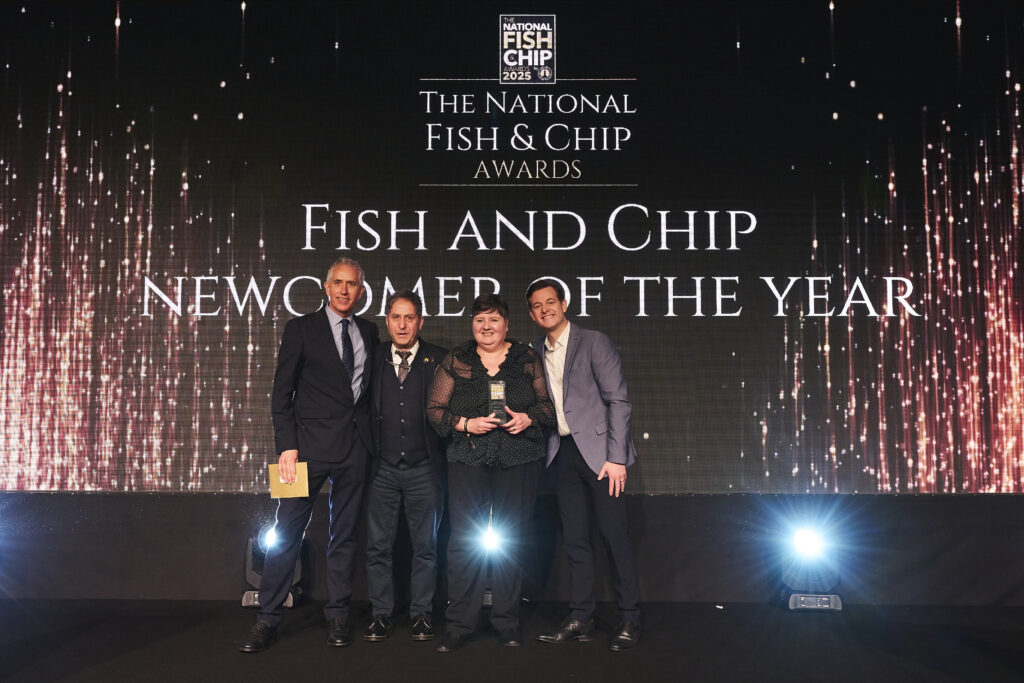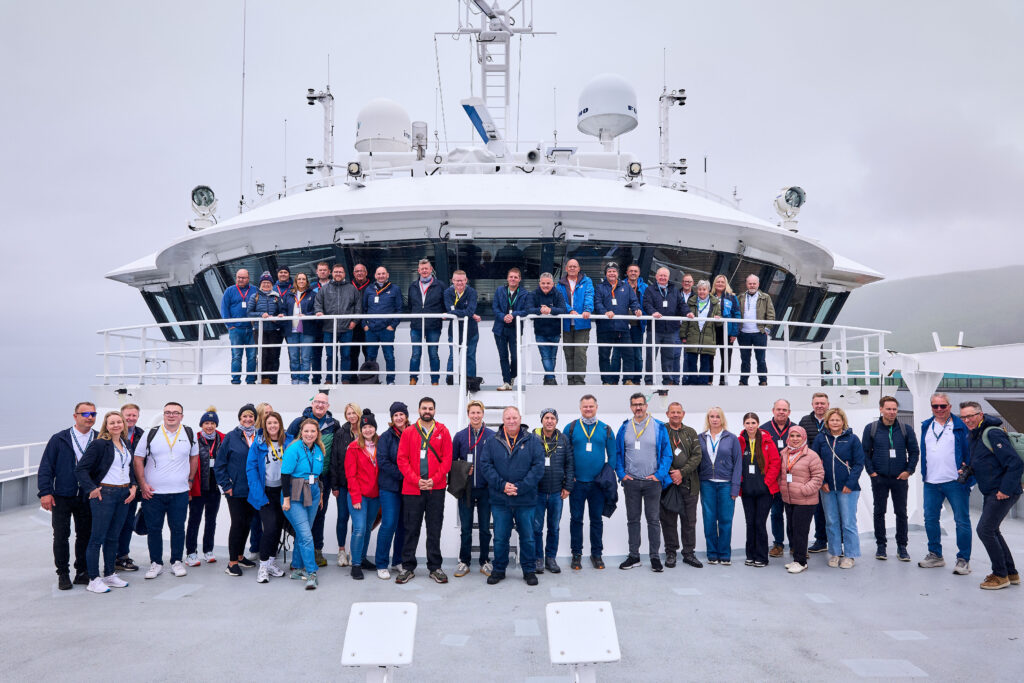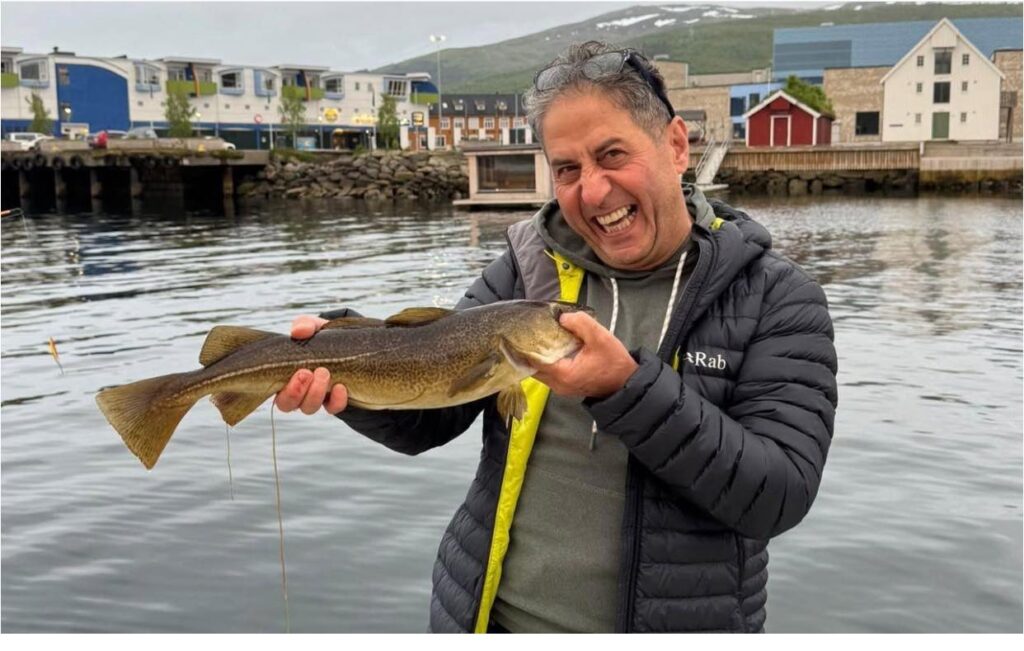From increasing prices and trying alternative fish species to longer working hours, Ali is carefully considering every decision to ensure his business weathers the challenges of the coming years
When costs go up, it affects all of us as business owners, but we’re quite lucky in our setup. My wife Katrina and I both work in the shop, and most of our staff are part-time, which gives us a bit of flexibility. Having said that, we have had to make cutbacks: we’ve curbed the hours of the staff we have and me and Katrina are working longer hours. Also, one full-time staff member left, and we haven’t replaced him. However, it’s necessary because haddock alone has increased by 134% since last year, which is a significant rise. We’ve had to be careful with every decision.
Just before we entered the Newcomer category at the 2025 National Fish & Chip Awards, we increased our prices. That was the first time since we opened in April 2023. We did it then because prices kept creeping up, and we didn’t want it to look like we’d raised them just because of the award if we were to win it. I’m glad we did, because we did win the award but also because fish prices have only gone up more since then. Most of our customers are understanding, but you can feel the difference. Regulars who used to come twice a week now come once.
We used to sell cod at the same price as haddock, even though haddock was cheaper by about £20 a box, and absorb the difference. Our area is predominantly haddock, but we get tourists who ask for cod. Now, though, cod’s price has increased so much that we’ve had to separate the prices. Haddock and chips are now £10.50, and cod and chips are £11.50.
We’re also exploring alternative fish species. I read an article in your magazine last month about different options, and I thought I’d give pollock a try. I go fishing myself, so when I caught some pollock recently, I took it back to the shop, filleted and cooked it, and absolutely loved it. But what I got delivered from my supplier, which was Alaskan pollock, was nothing like what I caught in the waters off Bridlington. It cost £30 for a 4.54kg box, which seemed good, and I thought, worst case scenario, I’d use it for fishcakes or fish bites, which I make in-house. But the size and taste just wasn’t right.


After the Inspiration Day organised by The Norwegian Seafood Council in London in May, Victoria Braathen, UK director at the Norwegian Seafood Council, reached out and asked if I’d like to try saithe. I am keen to try it, but it has a dark, fatty bit on the fillet which will need trimming. I don’t mind doing that work myself, but that said, the price difference between haddock and saithe is only £2–3 per box, so I’m unsure if it will be viable and attractive enough to customers at the price when it’s clearly very different to haddock.
We’re also considering alternative menu items. During the pandemic, we ran takeaway street food – piri piri chicken, burgers, Greek-style gyros – and it did really well. We’ve been thinking of bringing some of that back to attract a younger crowd, as fish and chips don’t always appeal to the next generation. We’d offer it as click-and-collect only to keep it simple. But with staff cut down, it’s mainly Katrina, me, and one part-timer now, and we’re cautious about putting pressure on ourselves. It’s a juggling act between attracting new customers and keeping existing ones happy.
Even though it’s tough, I do believe fish and chips will survive. At the Inspiration Day, last year’s Fish & Chip Shop of the Year winners, Kim and Ryan at Ship Deck, said fish and chips are bomb-proof, and I genuinely believe that. It’s the soul and spirit of this country. But also, when I was in Norway on the award-winners’ trip, I asked the owner of Langøy, the frozen-at-sea fishing trawler we went out on, what the future looked like with quotas and prices. He showed me a chart tracking fish stocks since WWII, and although it had clear peaks and troughs, it always came back. They believe stocks will mature by 2027, and prices will return to sensible levels, which gave me hope.










